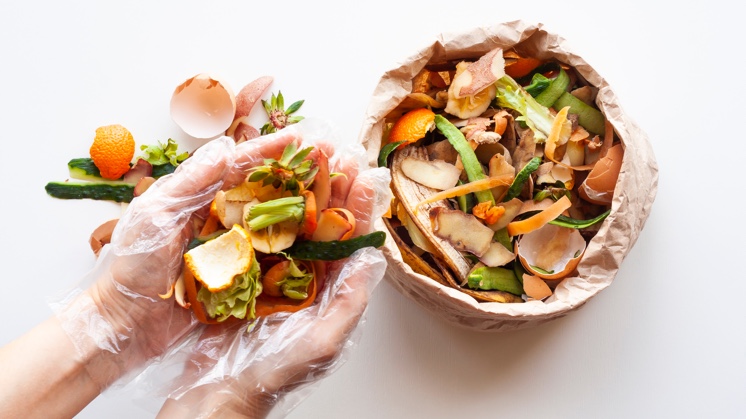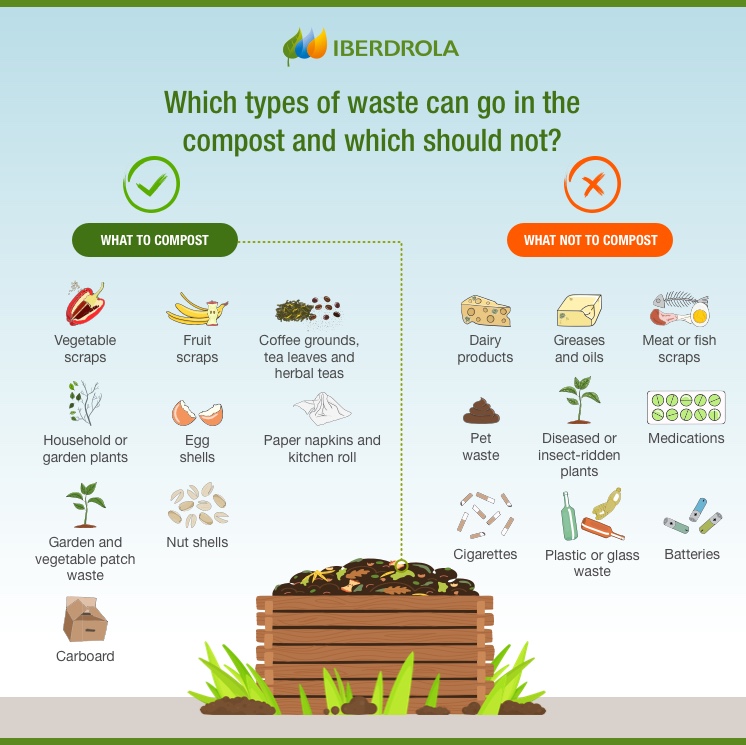Home composting
How to make compost at home for your vegetable patch or garden?
More and more people are committed to caring for the environment, and activities like composting at home are becoming increasingly popular. Not only is this a way of bringing nature into your daily life it is also an excellent family activity that conveys values around responsible consumption and recycling, both of which are crucial to the future of the planet.

The idea of composting at home is no fad. A growing number of people are taking time to recycle their organic household waste with the same objective in mind: to contribute to better waste management. It takes only a little effort, and the benefits are huge, particularly for the planet. What's more, according to Oxfam, an NGO working in development cooperation, it is an excellent way to get in contact with nature, to share values including responsible consumption and to drive the circular economy.
What is compost
According to the United States Environmental Protection Agency (US EPA) compost is "organic material that can be added to soil to help plants grow". In other words, it is a natural fertiliser produced by the effects of bacteria, fungi and worms on organic waste, which is commonly used to boost soil fertility and feed plants.
Although recycling this waste tends to be the responsibility of waste collection services in towns and cities, more and more people interested in the environment are starting to produce their own compost at home. Not only is it an effective way to feed house plants and urban vegetable gardens, it is also an efficient way to deal with food waste.
Benefits of compost
Making compost has several benefits for you and for the environment:
It reduces CO2 emissions into the atmosphere, and therefore air pollution, improving air quality.
It is a way of replacing the throw-away culture with the circular economy (reduce, reuse and recycle).
It replaces the need for chemical fertilisers and insecticides, reducing soil contamination and preventing erosion.
It enriches poor, infertile soil, boosting it with nutrients, and making it more fertile and productive.
It reduces the amount of daily waste generated by the household that ends up in landfills, contributing to the zero waste movement.
How to make compost at home (tips)
You only need two things to make compost at home: a compost bin or a container — you can buy a specific bin, make a hole in the ground if you have enough space, or recycle big plant pots or wooden fruit crates — and the raw materials, the organic waste that you produce every day.

Basically, these are the steps to follow:
- Include a lower layer consisting of garden earth, leaves and twigs to give it the compost a solid base.
- Add other waste such as fruit and vegetable scraps or coffee grounds, tea leaves and herbal teas. You can also put in egg shells and nut shells and even paper napkins and cardboard.
- The layers of compost should not be very thick because this will stop oxygen from penetrating, which is essential to the process.
- The compost must be kept moist at all times, particularly in a dry climate, so that it breaks down quickly.
- Turn the compost every so often and wait between three and five months, depending on the climate and the type of waste used, until the process finishes.
TYPES OF COMPOST
Let's take a look at the main types of compost:
Traditional
This depends largely on the form or place where the organic materials is gathered. To do it correctly, the most important factor is to follow the steps discussed above and to keep the proportions of the different types of waste correct, distinguishing between carbon-rich and nitrogen-rich materials.
Vermicompost
One of the best organic composts for soil and plants. What makes this so good are the red California worms that are able to devour practically any type of plant waste. They are quick to breed and produce what is known as worm humus or vermicast.
'Bokashi'
This technique originated in Japan, where rice farmers devised a way of treating waste to benefit their crops. The main advantage is that the mixture breaks down quickly — in just two weeks — thanks to a mixture of waste, molasses and yeast, among other ingredients, that speed up the process.
Circular economy model at the Iberdrola Group
At Iberdrola, we work to be more respectful of nature in our three strategic sustainability areas: climate action, biodiversity protection, and circular economy.
For this reason, our sustainable business model is based on the circular economy model, a system for making the most of resources in which priority is given to reducing the use of new raw materials through efficiency in processes, product life extensions, and a firm commitment to the reuse and recycling of materials.




